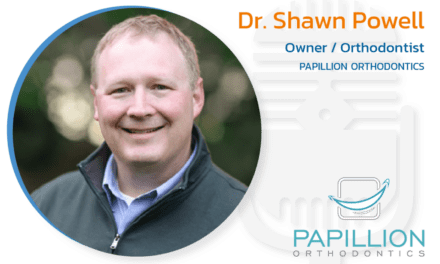As we are seeing a change in today’s business model, and an increase in multi-specialty practices, we are recognizing the need to create and manage an efficient feeder program. The intention of the multi-specialty business model is to create a “one-stop shop” for our patients. Specialists are coming together to save on costs and increase revenue. But if you have not created, and are not effectively managing, your feeder program, then I guarantee you are missing out on valuable revenue.
A feeder program is, essentially, the system and processes you create within your practice of evaluating the comprehensive needs of your patient, not just your specialty, and referring that patient to the appropriate specialist within your practice. This absolutely needs to be a well-oiled machine where every staff member is well-trained, knows their part and responsibility, and has a high level of accountability in place. There are two parts to a well-designed and managed feeder program. The comprehensive evaluation and referral, and the scheduling and follow-up.
When there is an efficient feeder program in place, every specialist within the practice benefits. When you have a general dentist who does a comprehensive evaluation on the patient, refers them to the appropriate specialist, and whose team gets that appointment scheduled immediately, and follows up on that scheduled appointment and treatment, it is much more effective and profitable. If you don’t have processes in place, valuable referrals, connections, and revenue fall through the cracks.
The first part of a successful feeder program is the comprehensive evaluation and referral. The most important thing to avoid is the “narrow vision” mentality; instead, focusing on the patient as a whole and not just your specialty. This is the biggest mistake we see in multi-specialty practices. The feeder doctor needs to do a full comprehensive evaluation and identify all the patient’s needs, including issues outside the scope of their specialty. When a patient comes in for his dental appointment, it’s important the doctor and the assistant work together to observe and recognize issues and needs, educating the patient, documenting everything, and referring to the specialist, if necessary.
It should be part of your expected protocol for every hygiene patient to have an occlusion evaluation by a certain age. As the patient is in for their normal hygiene appointment, the hygienist should be trained and scripted to provide a high level of education to the patient on the importance of working with the patient’s jaw growth for the optimum dental and orthodontic result—getting the greatest results in the shortest amount of time. When these two specialties partner together on behalf of the ultimate dental result for their patients, they are providing a comprehensive approach to their patient’s dental health. The patient trusts their hygienist and their dentist, therefore, it’s imperative the education starts in the hygiene chair and it’s automatically scheduled and part of the patient’s protocol and experience in your office. This approach to the patient’s orthodontic treatment also provides a much more thorough understanding of what the patient is experiencing.
The second part of an efficient program is the process that happens after the evaluation and referral. You should have a Scheduling Coordinator or Patient Care Coordinator assigned to each specialist and familiar with their schedules and referrals. Often, there is more than one Scheduling Coordinator and it’s just as vital they are cross-trained appropriately. There should be a very tight follow-up process so none of the referrals are falling through the cracks. For example, if Dr Smith was the GP and he had an oral surgeon, pedodontist, periodontist, and an orthodontist onsite, he might have a Patient Care Coordinator assigned to the periodontist and pedodontist, and another Patient Care Coordinator assigned specifically to the orthodontist and the oral surgeon. Although cross-training is important, it is vital there are specific responsibilities for accountability purposes. If the orthodontist’s schedule is continually shy and there are very few referrals, you need to know who to go to for those reports, and possibly do further training with that individual. These Scheduling Coordinators are responsible for the reports that need to be provided and for keeping the specialists’ schedules filled and productive.
The Office Manager or the Owner/Doctor needs to have specific reports run and given to them monthly. This is very important for keeping track of production metrics. There is no other way of measuring the success of this business model. You will need to know if the referrals are being made, how many, and whether treatment has been scheduled and completed.
When the GP has thoroughly evaluated the patient, identified issues such as a malocclusion, and referred the patient to the orthodontist for an occlusion evaluation, it needs to immediately go to the Scheduling Coordinator or Patient Care Coordinator, who would then walk through their process before the patient ever left the office. When our staff has processes and tools, such as the following script, and a high level of accountability, this is a very effective system.
“Dr Smith has recommended you see Dr Drysdale for an occlusion evaluation. Dr Drysdale is our orthodontist onsite and, for your convenience, I can get that scheduled now. Does Tuesday at 1:00 work for you?”.
This is smooth and convenient for the patient, but often we hear things such as, “I want to go home and talk with my husband before I schedule Tommy for an ortho exam.” The Scheduling Coordinator would then enter the appropriate referral code. These codes are vital as this is how you track whether your feeder doctor is doing referrals. There are two important factors these reports are used for. The Referral Report is used by the Scheduling Coordinator to call all the referrals that haven’t yet been scheduled. This should be a daily process and each referral needs to be coded correctly and notes added to their file. When this process is done well, the Scheduling Coordinator would then have the reports to follow up with the patient in a couple of days or a week to schedule that evaluation. In addition, either the Office Manager or the Owner/Doctor needs this report to see how many referrals are being made and whether the feeder is making referrals in your practice.
In addition to the Referral Reports, the Incomplete Treatment Report is just as important. This will keep track of the treatment that has been recommended and either completed or not completed. When these evaluations and referrals have been thoroughly documented and coded properly, these reports will be the tools needed to track your program metrics and make sure none of these are falling through the cracks.
In conclusion, creating a successful feeder program, one that is efficient and smooth, with a high level of accountability, doesn’t have to be difficult. Start with the two basic aspects of a successful feeder program: The comprehensive evaluation and referral processes, and the scheduling and follow-up. Take advantage of your management software to its fullest and use the reports to monitor your successes and what needs improvement. OP






